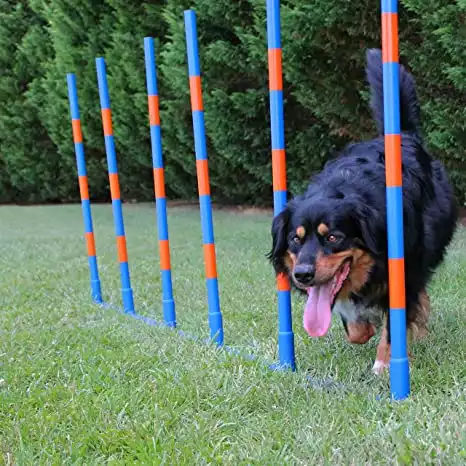Dog Agility Weave Poles
March 25, 2021 2021-04-12 5:51As an Amazon affiliate, we earn a small commission on qualifying purchases at no extra cost to you.
For anyone starting out in agility training, weave poles can be the most daunting obstacle to teach their dog. How do you train your pup to go left and right, left and right, left and right … ideally as lightening fast as you can see dogs do on TV?
Let’s learn everything there is to know about weave pole training!
Table of Contents

Weave pole specifications
All agility organizations have very specific guidelines for the weave poles. There are always 12 poles, spaced 24 inches apart.
The dog of course has to navigate them in a zig-zag pattern. However, not just how to wiggles through the poles is crucial, but also how he enters them. In competitions dogs get faulted for incorrectly starting the weave poles.
The dog always enters the row of poles with the first pole on the left shoulder. He has to complete all 12 poles without skipping one!
Buying weave poles
You can buy weave poles at a variety of different vendors. Our favorite weave poles are sets like this one:
These weave poles are perfect for teaching your pup via the channel method described further down.
Sturdy and easy-to-adjust, they are great beginner weave poles. These poles come in sets of 6 and 12. If you are looking to pursue competitions, get the set of 12. If you just want to have fun in your backyard, 6 will do just fine!
The red and blue coloring provides good contrast for your dog - this is crucial as dogs do not have the best color vision and can crash into poles if they are not well visible.
Considerations before training
Fast weaving puts an enormous amount of strain onto a dog’s shoulders and spine. It is absolutely crucial that your dog has finished growing before starting weave pole training. Even if you are very tempted to try it out with a little puppy – don’t! He could get very hurt and his agility career may be cut short.
In addition, your dog should be at a healthy weight and in overall good shape. If he is overweight or has not been getting much exercise recently, get him into shape first and then pursue the weave pole training.
Note that no dog learns to do the weave poles in one day. The best way to teach weaving is through consistent (ideally nearly daily) practice. Even with a session every day it might take as long as 2-3 months until your dog can solidly weave.
Weave pole training
Many beginner owners start by trying to lure their dogs through the weave poles with a treat in their hand. This is actually not a great idea – it makes the dog’s weave pole performance very slow.
(Luring over obstacles in general is often not the best approach – this also applies for example to the dogwalk or jumps).
Because the dog does not learn himself where to go and rather just follows your hand and treat mindlessly, it is nearly impossible to get him to speed up and perform the weave poles independently.
In addition, owners are not allowed to put their hands in between the poles at a competition. If your dog has learned to weave by you luring him in and out of the poles, chances are that you might get faulted or disqualified if you try this at a trial!
The channel method for teaching weave poles
A much better way to teach a dog to weave is by using the channel method. In the channel method, we take the 12 poles:
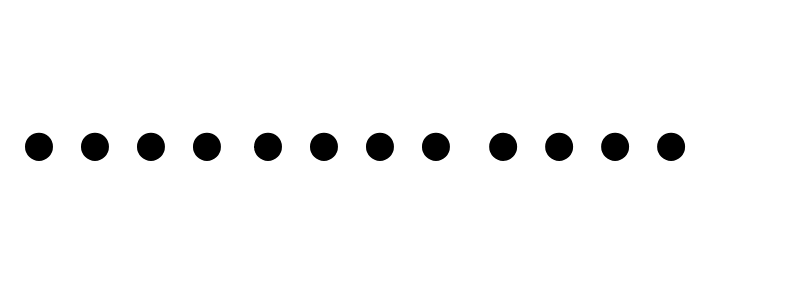
Now we will make a literal channel out of it. For this, every second pole is moved away from the line:
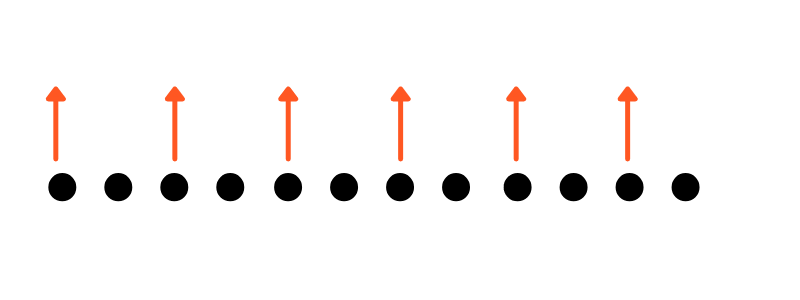
So that it looks like this:

Now you teach your dog to run through these “channel weaves”. This will be easy because running is a straight line is not a challenge for any dog!
Over time, you start to move them closer together:
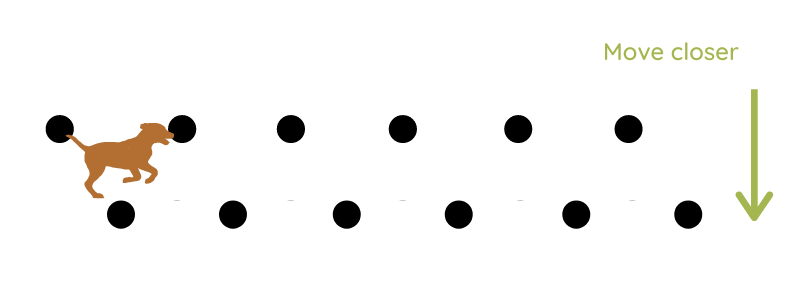

Until your dog is running through the closed channel!
The beauty of this weave training method is that in the dog’s mind, he is only running in a straight line. This makes for a very fast and consistent weave pole performance.
Most competitive agility dogs are taught to weave using this channel method!
In competitions
Should your dog not perform the weave poles correcty, he is faulted in competitions just like with any other obstacle. How many faults result and whether the dog is disqualified will depend on the venue you are competing in.
In most beginner classes, dogs are allowed to redo the weave poles 3 times. This is especially important for the entry – most young and excited dogs do not enter the poles correctly when they are excited at a competition.
In the higher classes, owners often are not allowed to redo the weave poles and instead get faulted or disqualified.
Weaving for dogs of different sizes
Your dog’s size, breed and body built will determine how exactly he navigates the weave poles.
Smaller dogs usually “hop” through the poles – meaning that they jump to one side of a pole with both legs together, then to the other side, with both legs together etc.
Most dogs up to a size of about 20-30 pounds show this weave pole performance.
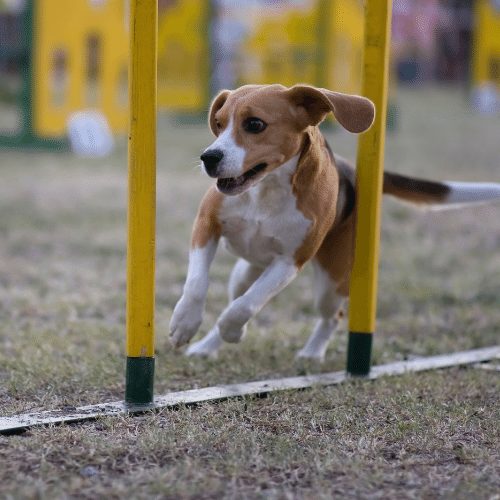
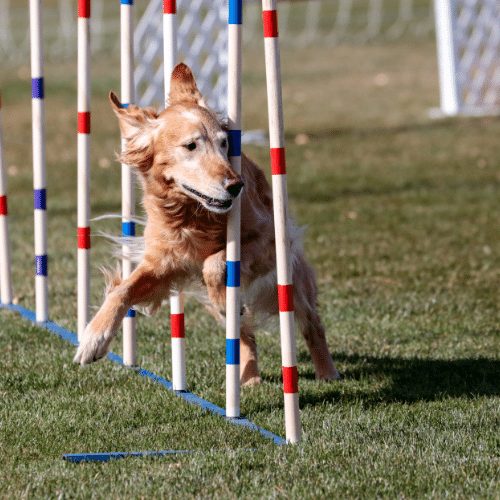
Large dogs are more likely to “single step”. This weave pole behavior is also called “swimming”, because it looks like the dog is swimming through the poles.
If your dog navigates his weave poles with single stepping, you will only see him put down one leg at the side of each pole. Most Border Collies, Golden Retrievers, Belgian Malinois etc. choose to weave in this fashion.
The Bottom Line
Weave pole training intimidates many owners starting out in agility. It does not have to be that way!
With the right approach, you can teach your dog to weave well. However, do expect the training to require daily practice for 1-3 months. Because weaving is physically very straining, you should keep your sessions short. Of course, only work with a dog who is finished growing, is at a healthy weight and in good physical shape overall.

